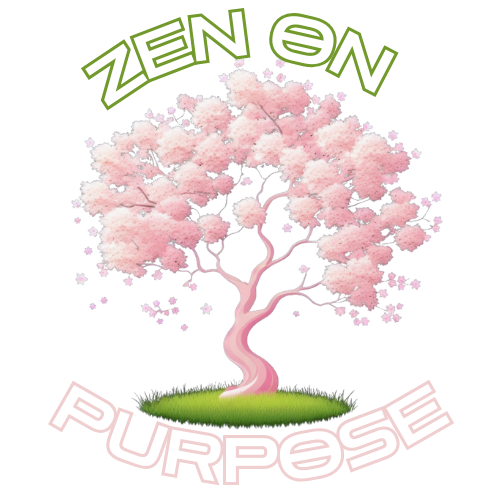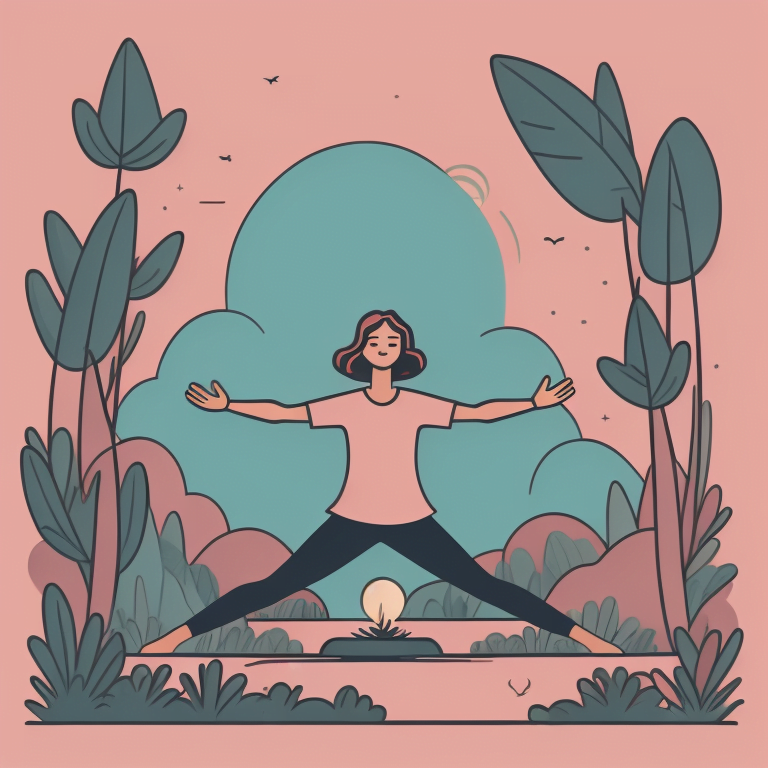Welcome to the Zen Zone series, a sacred space within the Health Haven section of our shared journey towards a happier and healthier life. In this series, we embark on a voyage of self-discovery and well-being, exploring various techniques and philosophies that guide us towards the serene shores of inner peace.
Today’s exploration is a profound one — an odyssey through the 8 Limbs of Yoga as illuminated by the wisdom of B.K.S. Iyengar in “Light on Life.” Join me as we unravel the layers of this ancient practice, unveiling the essence of the inward journey and discovering the transformative power it holds.
In Chapter 1, “The Inward Journey,” Iyengar takes you on a quest to discover something extraordinary: the core of who you are. It’s like realising that the answer you’ve been searching for isn’t hidden externally but lies within, waiting for you to find it through introspection.
Navigating the Layers: The Concept of The Five “Kosas”
Think of “kosas” as layers of your being, like different aspects that make up the unique you. These layers include:
- the physical body (annamaya kosa).
- energetic body (pranamaya kosa).
- mental body (manomaya kosa).
- intellectual body (vijnanamaya kosa).
- blissful or soul body (anandamaya kosa).
Iyengar encourages you to see these layers not as separate pieces but as interconnected elements forming a complete, harmonious whole.
The Human Predicament
In “Light on Life,” B.K.S. Iyengar depicts the human predicament as a delicate balance, navigating the realms of earth and sky. These symbolic representations encapsulate the tangible, practical world, often referred to as Nature or Prakrti, and the intangible, eternal reality, known as Soul or Purusa.
Nature (Prakrti): The Practical, Material World
Nature, in the context presented by Iyengar, encapsulates the tangible aspects of our existence—the material world that surrounds us. It comprises the physical, observable elements of life, including the complexities of the external environment, societal structures, and the physical body. In this realm, individuals grapple with the challenges and demands of daily life, facing the intricacies of work, relationships, and societal expectations. Nature embodies the transient, ever-changing aspects of our existence, subject to the flux of time, external influence and chaos.
Soul (Purusa): The Non-Physical, Eternal Reality
On the contrasting side of the spectrum lies the concept of Soul or Purusa. This represents the intangible, eternal essence that transcends the limitations of the material world. The Soul, according to yogic philosophy, is unbound by the constraints of time and space. It is the eternal, unchanging core that exists beyond the fluctuations of the external environment. The Soul is often associated with profound aspects of human experience, such as consciousness, inner wisdom, and a connection to a universal, spiritual reality.
The Veil Between Nature and Soul
Iyengar’s exploration delves into the intricate relationship between Nature and Soul, envisioning a blessed union that seeks to remove the metaphorical veil between these two aspects of human existence. The “veil” symbolises the barriers and illusions that often separate individuals from recognising the profound connection between their tangible, everyday experiences and the deeper, spiritual dimensions of their being.
In the pursuit of yoga, practitioners aim to lift this veil, seeking to harmonise the practical aspects of their lives with the eternal truths represented by the Soul. It involves acknowledging the interconnectedness of one’s actions in the material world with the spiritual dimension within. Through practices like meditation, self-reflection, and mindfulness, individuals aspire to create a synergy between Nature and Soul, fostering a deeper understanding of their existence and purpose.
Iyengar’s vision invites individuals to navigate this delicate balance consciously, recognising the beauty and significance of both Nature and Soul in the human experience. It encourages a holistic approach to life—one that integrates the material and spiritual dimensions, ultimately leading to a more profound and harmonious existence.
Cohesive Progress: The Eight Limbs of Yoga
In B.K.S. Iyengar’s masterful work, “Light on Life,” Chapter 1 serves as an introduction to the profound philosophy that underlies the transformative journey of yoga. At its core, this journey is delineated through the “Eight Limbs of Yoga,” providing a comprehensive roadmap for spiritual evolution. These limbs, likened to guiding principles, intricately weave together to form the fabric of holistic well-being, each limb contributing to the full blossoming of the individual on the path of self-discovery and spiritual enlightenment.

1. Yama: Ethical Foundations for Harmonious Living
Yama, the first limb, serves as the foundational petal in this spiritual bouquet. It establishes ethical precepts governing our interactions with the external world. Think of Yama as the act of planting seeds—seeds of:
- kindness.
- truthfulness.
- non-violence.
- non-stealing.
- moderation.
These ethical foundations nurture the soil for the growth of a spiritually rich life, creating harmony in our external engagements.
2. Niyama: Cultivating the Inner Garden
The second limb, Niyama, directs our focus inward, akin to tending to the garden of our inner selves. Cultivating qualities such as contentment, self-discipline, self-study, and surrender to a higher purpose, Niyama provides the tools that nurture the flourishing of spiritual virtues within. It’s a journey of self-care and introspection, essential for the overall well-being of the individual.
3. Asana: Sculpting the Mind and Body
Moving beyond philosophical principles, the third limb, Asana, focuses on physical postures. It is not merely about stretching and bending the body; rather, it serves as a means to sculpt the mind, fostering self-awareness and aligning the physical body with the subtleties within. Asana becomes a moving meditation, a practice of mindfulness through bodily movements.
4. Pranayama: Breath as the Bridge to Tranquility
Pranayama, the fourth limb, introduces the art of breath control. Envision it as a bridge connecting the external and internal dimensions of your being. This controlled breathing facilitates focused awareness and tranquility, creating a bridge that spans the realms of the physical and the metaphysical.
5. Pratyahara: Withdrawing into Inner Stillness
The fifth limb, Pratyahara, marks a transition from external distractions to inner focus. It involves withdrawing the senses into the mind, creating a serene space essential for the forthcoming stages of meditation. Pratyahara is a practice of turning inward, disengaging from the external stimuli to explore the richness of the inner landscape.
6. Dharana: Concentration as Unbroken Awareness
Dharana, the sixth limb, delves into unbroken concentration. Picture it as focusing a spotlight on a single point. It becomes the precursor to deeper meditative states, fostering a mind capable of sustained attention. Dharana cultivates the ability to direct the mind’s focus, creating a foundation for the stages of profound inner exploration.
7. Dhyana: Meditation as the Path to Wisdom
The seventh limb, Dhyana, unfolds as meditation. It transcends being a mere practice; it becomes a journey into wisdom and heightened awareness. Visualize it as a serene lake reflecting the depth of your inner self. Dhyana is a sustained state of meditative absorption, where the boundaries between the meditator and the object of meditation begin to dissolve.
8. Samadhi: Blissful Union with the Divine Self
The final limb, Samadhi, symbolises the ultimate union. It represents the lotus fully bloomed—a blissful absorption, transcending duality, and achieving oneness with the Divine Self. Samadhi is the culmination of the yogic journey, offering freedom from the cycle of karma. It is the state of existence where bliss becomes not just a fleeting experience but a continuous, integrated aspect of one’s being.
In the progression through these eight limbs, Iyengar invites practitioners to cultivate a holistic approach to life, integrating ethical foundations, physical postures, breath control, and profound inner exploration. This transformative journey unfolds like a blossoming flower, where each petal contributes to the full realization of the individual on the path of self-discovery and spiritual enlightenment.
As for the path to achieving the state of Samadhi, subsequent chapters in “Light on Life” delve into the intricacies, providing a clear and detailed roadmap for practitioners. These chapters unfold the practices and wisdom that guide individuals toward the ultimate union, offering insights into the art of mindful living, meditation, and the profound states of consciousness that lead to the attainment of blissful existence. The journey, as outlined by Iyengar, becomes a transformative process, a profound exploration of the self, and a harmonious integration of mind, body, and spirit.
Conclusion
As we conclude our exploration of the 8 Limbs of Yoga in this Zen Zone installment, let us carry with us the wisdom gained from the ancient yogic path. The journey inward, guided by the foundational practices of Asana, Pranayama, and Dhyana, beckons us to cultivate a harmonious existence — not just in the physical realm but within the sanctuary of our minds and the depths of our souls.

